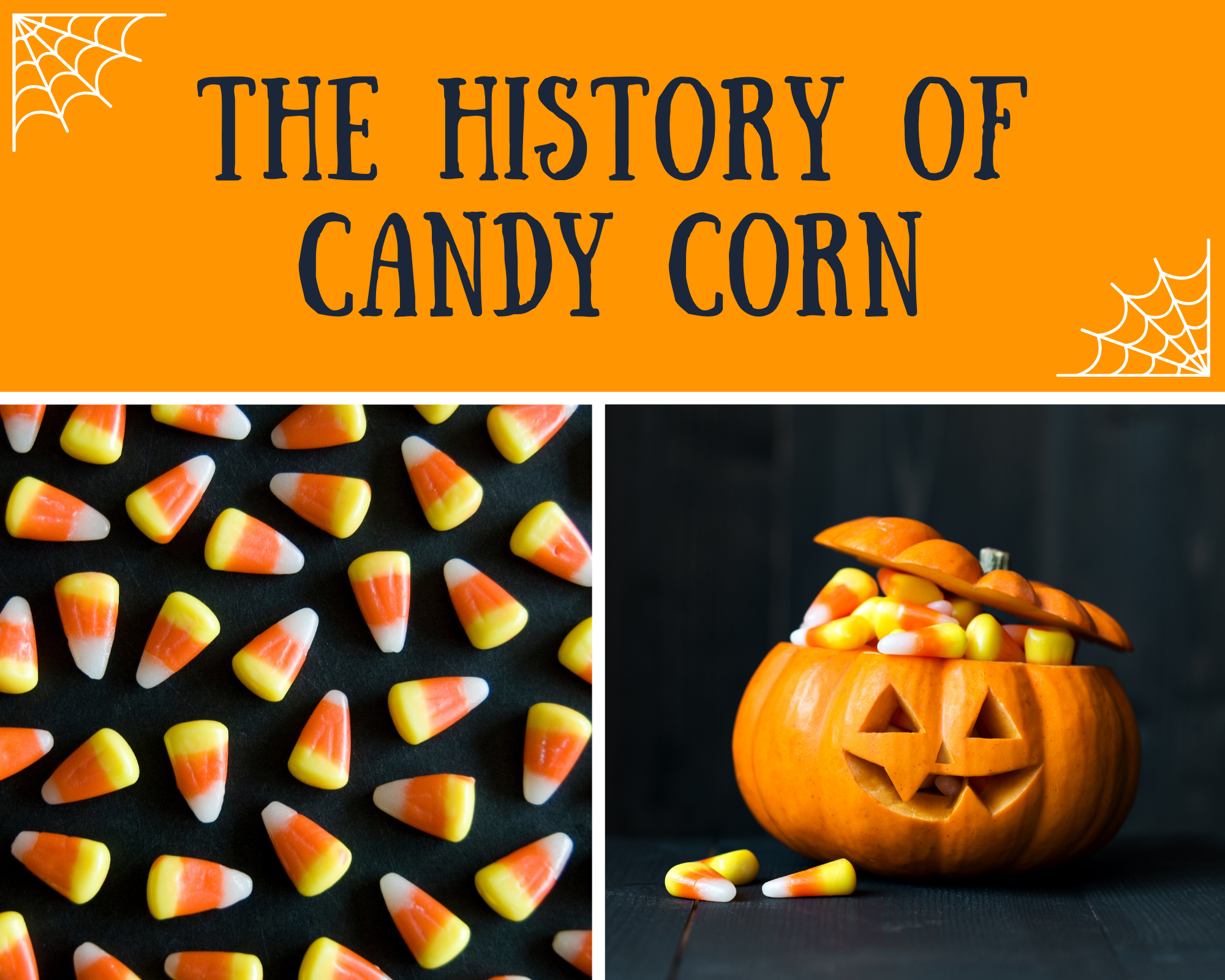Around Halloween bags of Candy Corn begin appearing on shelves and seeing them sparks varying reactions. It seems Candy Corn is loved or hated – and the opinions on each side are very strong. Yearly, though, it’s one of the most popular Halloween candies. It’s estimated by the National Confectioners Association that 35 million pounds are sold annually. That’s a lot of Candy Corn! Even if you’re not a fan of them, the history of Candy Corn is interesting.
Who Invented Candy Corn?
The history of Candy Corn dates back to 1880. It was invented at the Wunderle Candy Company in Philadelphia, PA by a candy maker named George Renninger.
Why Was it Named Candy Corn?
At the end of the 19th century, agriculture-related treats were popular. Candy Corn wasn’t its original name. Shaped like a triangle and colored in white, yellow, and orange, Renninger’s candy was created to look similar to corn. Its original name was Chicken Feed to market to children of farmers (around this time a good portion of the American labor force was farmers). Its packaging had a rooster logo and the tagline “Something worth crowing for.”
What is Candy Corn?
Before machinery, producing the tri-color candies was labor-intensive. Candy Corn was made by cooking sugar, corn syrup, wax, and water until it broke down and became a slurry. Marshmallows were incorporated to help add a soft texture. The mixture had to be tinted and poured into molds three times to achieve the three layers. The core recipe remains the same today, but thankfully machinery has sped up the process. In the 20th century, Goelitz Confectionery Company (now Jelly Belly) began to mass-produce the candies and the candy became more widely available.
When Did Candy Corn Become Associated with Halloween?
After the Great Depression and World War II, as people moved out of cities and into the suburbs, trick-or-treating became popular. Kids would receive baked goods, toys, and change for their treat bags. However, that would change when candy companies began marketing candy to kids during Halloween. Around the 1950s, Candy Corn was included. It’s assumed to appeal to the mass market it became marketed as Candy Corn. Since its colors are associated with Halloween/fall, Candy Corn’s popularity began to rise.
Blue Ribbon Candy Corn Recipes
While it’s most popular in the fall and around Halloween, Candy Corn is produced year-round for various holidays. For example, at Easter, the candy is tinted with pastel colors and during the Christmas season, they’re green and red. Also, Candy Corn is no longer just corn shaped. Around Halloween, you can find them in the shape of a pumpkin. They’re not just for grabbing a handful out of the bag. Some people incorporate Candy Corns into their recipes.
